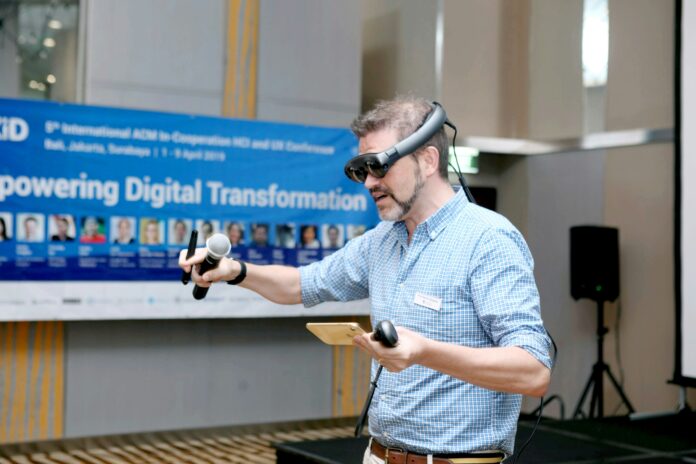In 2025, immersive tech is no longer niche; it’s becoming a core part of customer experiences, employee training, and collaborative workflows. Here’s how immersive technologies are enhancing engagement across industries today.
What Are Immersive Technologies?
- Virtual Reality (VR): Fully digital environments accessed via headsets, placing users inside a completely virtual world.
- Augmented Reality (AR): Digital content overlaid onto the real world, often via smartphones, tablets, or AR glasses.
- Mixed Reality (MR): Combines elements of both VR and AR, enabling interaction between digital objects and the real environment in real time.
How Immersive Tech Is Changing Engagement
1. Customer Experiences Like Never Before
Brands are using AR to let customers “try before they buy” — from virtually placing furniture in a room to previewing makeup looks through a smartphone app. VR offers immersive shopping or event experiences that keep users engaged longer and boost conversions.
2. Enhanced Training and Education
Immersive simulations allow employees and students to practice skills in realistic but risk-free settings. Industries like healthcare, manufacturing, and aviation rely on VR training to improve retention and reduce costly errors.
3. Remote Collaboration Gets a Makeover
MR platforms let distributed teams meet in shared virtual spaces, manipulating 3D models and brainstorming ideas as if they were in the same room. This leads to richer communication and faster decision-making.
4. Storytelling and Marketing that Captivates
Immersive storytelling captures attention and fosters emotional connections with brands. Interactive VR campaigns and AR filters create memorable experiences that drive social sharing and brand loyalty.
Real-World Examples
- Real Estate: Virtual home tours enable buyers to explore properties from anywhere, with AR tools to visualize renovations.
- Retail: AR apps let shoppers see how clothes fit or how products look in their homes.
- Healthcare: VR therapy helps with pain management and phobia treatment.
- Education: Immersive history lessons take students inside ancient civilizations.
- Events: Virtual conferences and concerts bring global audiences together in shared VR spaces.
Why Businesses Should Invest in Immersive Tech Now
As hardware becomes more affordable and user-friendly, immersive tech adoption is accelerating. Early adopters gain:
- Stronger customer engagement
- Differentiated brand experiences
- Improved training outcomes
- More effective remote teamwork
Getting Started
- Identify high-impact use cases in your business
- Pilot AR/VR solutions with small teams or customer groups
- Partner with technology providers for tailored implementations
- Collect feedback and iterate to improve user experience
Final Thoughts
Immersive technologies are no longer futuristic fantasies — they’re essential tools for meaningful engagement in 2025. Businesses that embrace VR, AR, and MR today will lead the way in customer experience, training, and collaboration tomorrow.
